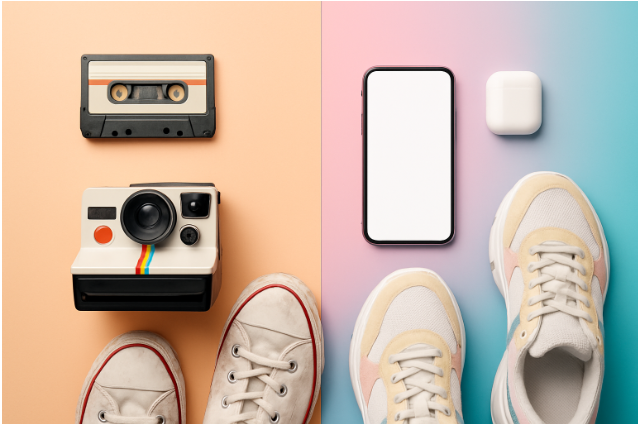
Every generation has its own style, taste, and way of living, yet the past keeps returning in new forms. Today, many brands are using nostalgia marketing. Gen Z, born from the late 1990s to the early 2010s, grew up with smartphones and social media in a constantly changing world. One might assume this generation only follows the latest trends, but surprisingly, many are deeply attracted to the past.
This has given rise to nostalgia marketing, where brands use retro elements—old designs, vintage packaging, or reintroduced trends—to create emotional bonds with young buyers. At first, it may seem odd: why would people who never experienced the 1980s or 1990s feel attached to those times? Psychology provides the answer—through pop culture influence and the search for authenticity. Let us explore why retro branding appeals so strongly to Gen Z and how businesses implement it across industries.
The Psychology of Nostalgia
Nostalgia is a sentimental feeling of comfort and happiness when recalling the past. Gen Z often experiences nostalgia for eras they never lived through, shaped instead by media, music, and cultural echoes. Though they did not live in the 80s or 90s, they embrace the music, design, and styles of those decades.
Thanks to platforms like YouTube and TikTok, retro content is easy to find. Teenagers today binge-watch old shows, wear 90s-inspired baggy jeans, and listen to retro-inspired albums—even though they never lived in that era. This creates a sense of connection, comfort, and style tied to decades they never personally experienced.
Why Gen-Z Loves Retro Branding
- Authenticity Over Perfection: Gen Z is sceptical of overly polished advertising. Old-school fonts, vintage colours, and textured photography feel more genuine than digital perfection.
- Pop Culture Influence: Retro-inspired shows and music (like Stranger Things or cassette tape revivals) have made vintage culture trendy. Brands tapping into this instantly feel relevant.\
- Stress Relief and Simplicity: With high academic and social pressures, retro branding provides a sense of calm and simplicity, even if Gen Z never lived through the referenced time.
- Fashion Cycles: Style trends repeat every 20–30 years. Just as Millennials revived the 80s, Gen Z is bringing back the 90s and early 2000s. Retro branding feels fresh rather than outdated.
Examples of Nostalgia Marketing
Coca-Cola and Pepsi: Release retro-designed cans to spark excitement among young buyers.
- Photo Printer Cameras: Instant cameras reintroduced for Gen Z’s love of tangible memories.
- Nike: Reissues sneakers from the 80s and 90s, instantly selling out among sneaker enthusiasts.
- Apple: Occasionally brings back retro wallpapers or design elements to evoke memories.
These examples show how innovation paired with nostalgia can strengthen brand appeal.
Beyond Gen Z: Universal Appeal
While nostalgia marketing resonates strongly with Gen Z, it also appeals to older generations. Young adults feel connected to childhood products, while older customers relive their memories. For example, when a fast-food chain brings back an old logo or menu item, older generations feel nostalgic while younger ones embrace the novelty. This dual impact strengthens brand loyalty across age groups.
Industry Applications
Nostalgia marketing can work across many sectors:
- Fashion & Lifestyle: Vintage clothing, sneakers, or throwback accessories.
- Food & Beverages: Retro packaging or old recipes that evoke childhood memories.
- Technology: Reimagined retro devices, like flip phones with modern features.
- Entertainment: Movies, music, and shows inspired by older times.
- Retail: Pop-up shops styled like old-fashioned stores, generating social media buzz.
Risks and Challenges
While nostalgia marketing is powerful, it must be used carefully. Brands that rely solely on the past risk seem outdated. Gen Z values creativity, so striking a balance between retro elements and modern innovation is crucial.
Conclusion
Nostalgia marketing goes beyond reusing old logos or colours—it creates emotional connections through shared memories. Retro branding gives Gen Z a sense of peace and stability in a fast-paced world. Though they never lived through the past, they embrace its styles through fashion, pop culture, and media. With the right balance of authenticity and innovation, nostalgia marketing can unite generations and strengthen brand loyalty.
